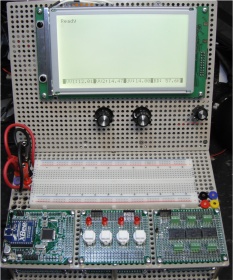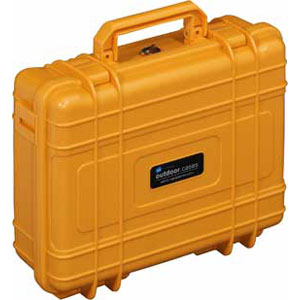 For the past 5 years, this has been my prototyping station and it has served me well. It wasn’t designed to be portable and it is a bit top heavy so I decided to replace it. The new prototyping station will use a B&W indoor/outdoor case (Fry’s carry these) to make it more portable and more self contained.
For the past 5 years, this has been my prototyping station and it has served me well. It wasn’t designed to be portable and it is a bit top heavy so I decided to replace it. The new prototyping station will use a B&W indoor/outdoor case (Fry’s carry these) to make it more portable and more self contained.
 It will have batteries as well as a plug in DC power source. The batteries are rechargeable so I am looking for a clean and effective way to switch between battery power and DC power yet be able to charge the batteries when the DC power is connected.
It will have batteries as well as a plug in DC power source. The batteries are rechargeable so I am looking for a clean and effective way to switch between battery power and DC power yet be able to charge the batteries when the DC power is connected.
I found several circuit examples that would work but they rely on passive trickle charging to keep the batteries charged. This is fine for a gel cell or NiCad batteries but I’m using 2700mAH NIMH batteries and would rather have an active charging system to avoid damaging the batteries or the prototyping station.
After some research and experimentation, I came up with this circuit that uses a relay to switch between DC power and battery power. the DPDT relay connects the batteries to a smart charger circuit when the DC power is connected.
The noise suppression and filtering isn’t reflected in the circuit yet but will be added later. I will also replace the FP2 D3009 relay with one that can handle more current.
A relay doesn’t feel like the most elegant way to do this but I haven’t found an alternative that allows for the smart charger. The other circuit examples rely on isolating diodes and may interfere with the charger.
Has anyone built a circuit like this before? Any suggestions on this circuit?

Eddy,
First, greetings, been a very long time since I came to Chicago. We’ll have to meet up again, when I’m able to get back to Chi-town.
I like this project, and have been looking into something like this for a while now. I was thinking of using a LiOH battery, as in a cell phone. Another possiblity that I have been considering, is NiMH, as in the low-cost rechargable AA cells at Wal-Mart. Either way, I want something that can be used as we use our cell phones – charge it overnight (or whatever) and then use it untiil the charge gets low, and I can plug it in, and keep on using it while it recharges.
Woule the LiOH chemistry be more like the gel-cells (or NiCD) that you mention in the examples above, or would those examples not work for LiOH, either?
LikeLike
Hi Art, it’s good to hear from you!
This approach would work with just about any battery chemistry. The charging circuit is key for the type of battery so if you use LiPO batteries the charger must be designed for LiPO. I chose NiMH for their weight since I needed a counterweight in the bottom of the case to account for the heavy display in the lid. Otherwise, I could have used LiPO batteries the same way.
Charging LiPOs is more tricky than NiMH. You should use a balancing charger to ensure each battery is charged correctly. If the batteries are out of balance, you run the risk of overcharging one of the cells without a balancing charger. That’s not a concern with NiMH.
LikeLike
Ok, it seems that NiMH would be the way to go. I’ve got several 5-cell AA battery packs, hook them up to charging circuits (with auto-cutoff) and take the output for the dev board circuits.
Thanks.
Also, what is going on with your store? It is showing that it is closed for Christmas (kinda long vacation, huh? 😉 )
LikeLike
I closed the store at the end of the year but can’t get my html editor to work to update the message.
My plan was to operate it full time when I retire. Now that we’re closer to retirement, my wife and I decided we didn’t want to be tied to a retail website after retirement so there was no reason to keep it going.
I’m using ebay now for some items and it’s much less paperwork…
LikeLike